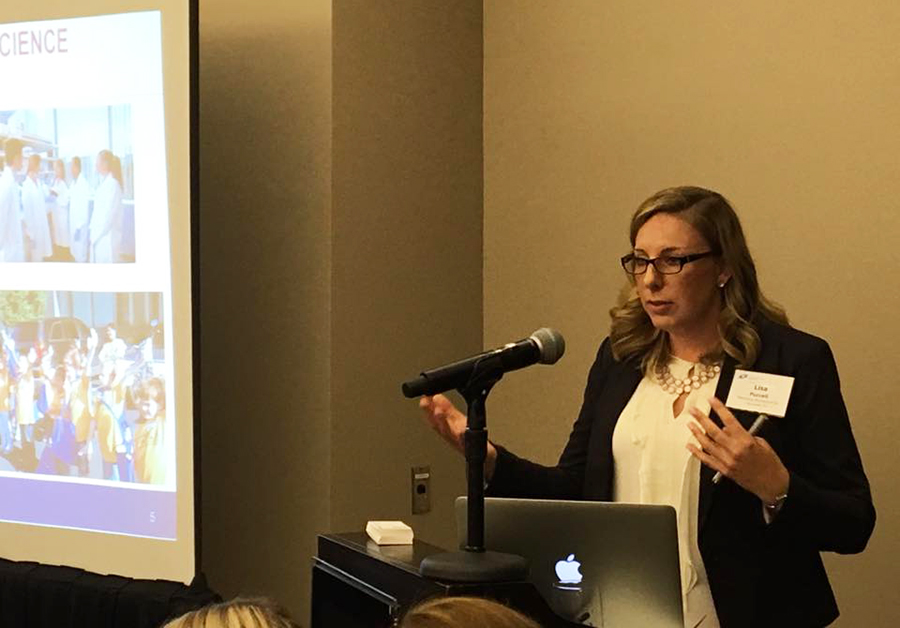Big data: an essential tool in today’s classroom

In today’s world, enormous quantities of data are being collected 24 hours a day, seven days a week. These large datasets are widely accessible and, if managed correctly, have the potential to revolutionize our knowledge of the world, from cancer research to climate change. The growing importance of big data and the ability to analyze it also have the potential to transform science classrooms and curriculums.
In this new landscape, understanding how to analyze big data is an essential tool for students, scientists, and citizens alike – and a key topic during both keynotes at the 2017 Research Teachers Conference sponsored by Regeneron.
Having a lot of data is worthless unless you can make meaning of it.
During their keynotes, Lisa Purcell, Senior Scientist at Regeneron and Ruth Krumhansl, founder of the Oceans of Data Institute, both offered advice to the more than 200 teachers at the conference on how to effectively use big data in the classroom.

“Having a lot of data is worthless unless you can make meaning of it,” Ruth said. “We have a responsibility to help our students make wise decisions in a very complex world.”
Ruth explained that her organization, Oceans of Data Institute, seeks to increase data literacy and transform science education using big data. With these resources, students can conduct a variety of big data research projects — all from the classroom. Moreover, even students interested in non-STEM careers like consulting or business analytics can benefit from understanding how to analyze and understand data sets.
Lisa emphasized that teachers have the power to change the world by providing the next generation with the correct analytical tools and approaches to handle such large quantities of information.
Students are interested in what is known, but they get more excited about what is not known.
“You’re training the next generation to do whatever. Whether it’s dealing with climate change, creating a vaccine for Ebola, or becoming the next President of the U.S. or Prime Minister of Canada,” Lisa said.
Understanding large datasets is critical to students’ success in school and their future careers. According to Ruth, students should begin working with data from a young age. This will enable students to practice analytical thinking as early as possible, and to begin asking important questions about what is going on in our world.
Teachers can help students discern the relevancy of what they are researching or working on. “What is the gap in knowledge that they’re trying to fill? What is the overall importance of the question they’re trying to answer?” Lisa asked.
When mentoring students, Lisa recommended that teachers help them understand the sources of their data. “Don’t let them get away with ‘they,’” she said. “It’s the most frequently cited research group. It’s very hard to evaluate ‘they’s’ methodologies.”
Students should also understand tools, procedures, controls, and why they chose their specific methodology. And they should be able to discuss their results, Lisa explained.
You’re training the next generation to do whatever. Whether it’s dealing with climate change, creating a vaccine for Ebola, or becoming the next President of the U.S. or Prime Minister of Canada.
“They should understand the difference between what they know and what they speculate,” Lisa said. “I cannot emphasize this enough. In science it’s ok to say, ‘I don’t know.’”
Ruth agrees that big data can help answer questions that students have. “Students are interested in what is known, but they get more excited about what is not known,” she said.


